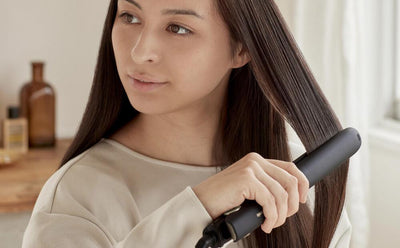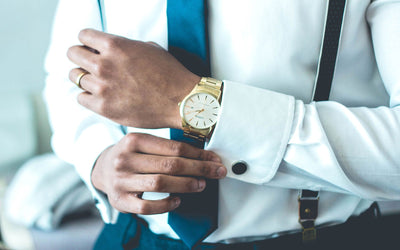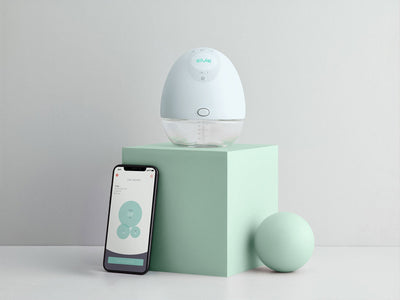Beauty
We know that shopping for a beauty device can be confusing and complicated at the best of times. So we thought we'd answer your top 10 most asked questions, so that you can begin your beauty device journey.
From the differences between microcurrent and radio frequency, to how to care for your skin after microneedling, get ready for the ultimate lesson in beauty tech.
What’s the difference between microcurrent and radio frequency?
Firstly, both technologies work to treat ageing skin, helping to sculpt and redefine contours and lift sagging skin. Microcurrent and radio frequency both stimulate the production of collagen to plump your appearance and smooth out the complexion, but they achieve this in different ways.
Radio Frequency uses heat energy which is transmitted deep into the dermal layers of the skin, to gently heat the skin’s cells and accelerate the production of collagen. The temperature also contracts collagen fibres to restructure the facial muscles, resulting in a tightened appearance.
Microcurrent differs from radio frequency as instead of heating the skin, microcurrent devices emit tiny electrical impulses into the skin to energise your facial muscles. These impulses mimic the body’s natural electrical current and stimulate collagen production in the dermal layers of your skin, while smoothing out your complexion in the epidermis.
Microcurrent therefore helps to minimise the appearance of fine lines and wrinkles, and also improves muscle tone and redefines the contours of your face.
Microcurrent is often used as a preventative measure too, as many people in their 20s start their treatments early to preserve their youthful complexions.
I’ve just bought an IPL device, how long will it take to see results?
With IPL treatments, you’ll see the best results when you stay consistent with your treatments. In most cases, you’ll need to complete an initial plan of 12 weeks, treating your body once a week. This is because your hair grows in different phases, so completing your treatments on a weekly basis ensures that all the hair follicles are treated.
There are 3 hair growth phases:
Anagen (active): this is the phase where the hair is growing and your hair contains the most melanin (the pigment which determines your hair colour). In this phase, IPL treatments are their most effective.
Catagen (club hair): in this period the lower part of the hair stops growing, but doesn’t shed and the follicle is reabsorbed. It can be difficult in this phase of the cycle for IPL treatments to have a permanent effect.
Telogen (tired): in the last phase of the cycle, the hair is in it’s resting phase. The old hair will fall out in preparation for the anagen hair. Permanent hair reduction cannot be achieved in this phase.
By looking at the different phases of the hair growth cycle, you can see why it’s important to stick to your IPL treatment plan, as not all of your hairs will be in the anagen growth phase at the same.
Many users start to see results in as little as 4 weeks, as hair grows back much thinner, lighter in colour or in small patches on the body. After the initial treatment plan for your device, you should only need to complete top-up treatments as and when they’re necessary.
Can LED light therapy really prevent and reduce wrinkles?
The short answer is yes, it can. If you’re looking for an LED light therapy treatment for anti-ageing, you’ll need to use a device that emits red LED light.
Red light stimulates the production of collagen, the protein responsible for providing structural support to bones and skin. Once this starts to deplete, your skin begins to lose its elasticity and shape, resulting in loss of volume and ageing skin.
Red light helps to accelerate collagen production, which will help to plump your skin, making it look much fuller and smoother too - meaning less fine lines and wrinkles.
It also helps to reduce inflammation and can even improve circulation too, creating an even skin tone and leaving you with a younger-looking and healthy glow.
What is microneedling good for?
Microneedling has a lot of benefits for your skin, many people might not realise which skin concerns can actually be treated with microneedling. Microneedling uses tiny needles to roll over the skin and create ‘micro injuries’ that boosts collagen production, resulting in a plumper, firmer complexion with visibly less wrinkles.
Because microneedling creates these tiny injuries, your skincare is also absorbed much better through the micro channels you’ve created. You should use ingredients such as Hyaluronic Acid or Peptides to enhance your treatments.
Using a microneedling tool on your face can also help to improve your skin texture and even acne scarring. As the needles accelerate the skin’s natural skin cell renewal process, your skin can repair itself and heal at a much quicker rate.
Microneedling across your body can also help to reduce cellulite and firm the skin. You’ll need to use a dermaroller with slightly longer needles for the body, as the skin here is thicker than the skin on your face.
Will a cleansing device be too harsh on my skin?
If you’re looking to purchase a facial cleansing device, always buy one from a reputable brand such as Clarisonic, FOREO or PMD. These brands have expertly designed their facial-cleansing technology and have rigorously tested their devices to ensure that they’re gentle on even the most sensitive skin.
Clarisonic’s cleansing devices harness the brand’s patented oscillation technology, which uses a gentle back and forth motion to flush out pores. Their brush heads are also designed with patented end-rounding processes so they never cause damage or inflammation.
The revolutionary LUNA cleansing range from FOREO uses soft and gentle body-safe silicone bristles to eliminate dirt and oil build-up from your skin. They’ve even developed their LUNA 3 device for specific skin types, so you can choose from Normal, Sensitive or Combination.
PMD’s Clean Pro range emits 7,000 vibrations per minute to lift away dirt and impurities from your skin. Plus it’s gentle heating technology melts away excess sebum while lifting and toning your complexion.
Does microdermabrasion hurt?
Microdermabrasion devices use a diamond-tip exfoliation head and gentle suction to buff away dead skin cells. The diamond-tip head is slightly rough in order to smooth your complexion, but the treatment feels like a light scratching sensation across your skin.
Plus you’re in complete control of how much pressure you apply to your skin when carrying out your treatments, just make sure not to press down too hard - we don’t want to cause any damage.
The treatment actually feels quite refreshing as it invigorates your skin, boosting circulation, refining your complexion and leaving you with a much fuller and glowing appearance.
What’s the best technology for reducing cellulite and toning the body?
Similarly to toning your facial muscles, the most common devices for body sculpting are microcurrent and radio frequency. These devices feature a larger surface area so you can treat areas of the body such as the legs, waist, hips and buttocks. Microcurrent and radio frequency devices channel their technology deep into the dermal layers of the skin, breaking down fat deposits and busting cellulite.
EMS technology is also a good alternative, as it can help to trim and tone your silhouette. Normally transmitted via a wearable device such as a belt, Electrical Muscle Stimulation (EMS) technology accelerates your workouts by sending low frequency signals to stimulate dormant muscles.
You can quickly and effectively change your body shape under a light load and can help you to tone up in even the most stubborn areas.
I’ve heard that some treatments make your skin more sensitive to UV light, is that true?
Yes, there are some treatments that can make your skin more sensitive to sun exposure. In particular, you should be extra careful after any microneedling, microdermabrasion or IPL treatments.
This doesn’t mean that these treatments aren’t safe though, it just means that you should follow the appropriate post-treatment care to look after your skin. After carrying out any of these treatments, you should avoid direct sun exposure where possible and also apply sunscreen - SPF50 is highly recommended.
I suffer with acne, which devices can I use to treat it?
If you’re looking for a device to banish acne, look out for blue light technology. This clinically proven light can kill acne-causing bacteria and stop breakouts without causing any damage to your skin.
Blue light is transmitted below the skin’s surface and then, when the bacteria is exposed to this light, it effectively breaks it up and kills it, banishing spots and preventing any further breakouts.
If you suffer from acne scarring, you can use a microneedling device to even out your skin texture and smooth out your complexion.
If you have any questions about any of our devices our Product Experts are always on hand to help, simply send an email to sales@currentbody.com and the team will get back to you as soon as they can.





























